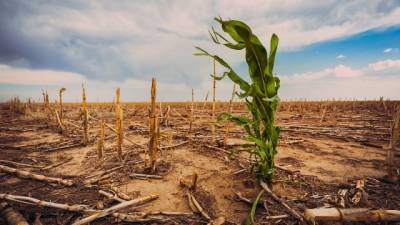NEW DELHI, 24 July 2024: India's agricultural tapestry is intricately woven with the threads of diverse weather patterns. From the snow-capped Himalayas to the tropical southern coasts, the country experiences a dynamic interplay of climatic conditions.
This climatic diversity demands a strategic approach to crop selection, with farmers meticulously choosing crops that thrive in their specific weather zone. Let's delve into some prominent weather-dependent crops that define India's agricultural landscape.
Embracing the Monsoons: Kharif Crops
The arrival of the southwest monsoon, typically in June, marks the beginning of the Kharif season. This period of abundant rainfall ushers in the cultivation of a variety of crops that flourish under these conditions. Some key Kharif crops include:
Rice: The lifeblood of India, rice thrives in the hot and humid monsoon season. Varieties like Basmati and Sona Masuri dominate the fertile plains and coastal regions with high rainfall.
Maize (Corn): A versatile crop, maize thrives during the Kharif season, with its short growing period aligning perfectly with the monsoon rains.
Pulses: Arhar dal (pigeon pea), Moong dal (green gram), and Urad dal (black gram) are essential protein sources cultivated extensively during the Kharif season. These legumes benefit from the monsoon rains and nitrogen-fixing properties improve soil fertility.
Cotton: While cotton cultivation is not solely restricted to the Kharif season, some shorter-duration varieties benefit from the initial monsoon showers for germination and initial growth.
Oilseeds: Groundnut, sesame, and soybean are some oilseeds sown during the Kharif season, requiring moderate rainfall for optimal growth.
Enduring the Dry Spells: Rabi Crops
As the monsoon recedes, ushering in a drier and cooler period, the Rabi season commences, typically from October to March. This season is dominated by crops that can withstand lower rainfall and cooler temperatures. Some prominent Rabi crops include:
Wheat: A staple cereal crop in India, wheat thrives in the cool and dry conditions of the Rabi season.
Barley: This hardy cereal, known for its drought tolerance, is a prominent Rabi crop, particularly in drier regions of the country.
Chickpeas: A significant source of protein, chickpeas, also known as gram, are extensively cultivated during the Rabi season due to their ability to withstand cooler temperatures.
Mustard: Known for its pungent seeds used for cooking oil, mustard thrives in the cooler and drier climate of the Rabi season.
Lentils: Masoor dal (red lentil) and Masoor dal (brown lentil) are some of the lentil varieties cultivated during the Rabi season, requiring less water compared to other pulses.
Beyond Kharif and Rabi: Zaid Season Crops
While Kharif and Rabi dominate the agricultural calendar, a shorter Zaid season exists between March and June. This interim period allows cultivation of short-duration crops that can tolerate the summer heat. Some Zaid season crops include:
Watermelon: This refreshing summer fruit thrives under hot and dry conditions, making it a perfect Zaid season crop.
Muskmelon: Similar to watermelons, muskmelons benefit from the hot and dry climate of the Zaid season.
Cucumber: This versatile vegetable flourishes in the warm temperatures of the Zaid season, requiring moderate irrigation.
Vegetables like bitter gourd, bottle gourd, and okra are also commonly cultivated during the Zaid season due to their shorter growing cycles.
The Art of Adaptability: Factors Beyond Seasons
While weather plays a crucial role in crop selection, other factors come into play:
Soil Type: The texture, fertility, and drainage characteristics of the soil significantly impact crop suitability. For example, cotton prefers well-drained black soils, while rice thrives in fertile alluvial plains.
Market Demand: Farmers often consider market demand for specific crops when making planting decisions. The proximity to processing facilities and transportation networks can also influence crop selection.
Government Policies: Government initiatives promoting specific crops or offering subsidies can incentivize farmers to cultivate those varieties.
Navigating the Uncertainties: Embracing Climate-Smart Practices
India's agricultural sector faces challenges associated with erratic weather patterns and climate change. Here's how farmers can adapt:
Drought-Resistant Crop Varieties: Planting drought-tolerant varieties of crops like millets and pulses can provide greater resilience in the face of water scarcity.
Water Conservation Techniques: Employing drip irrigation, mulching, and rainwater harvesting practices can optimize water use and minimize dependence on rainfall.
Crop Diversification: Seeding a variety of crops suited to the local climate reduces risks associated with unpredictable weather patterns.
Image credit: outlookindia.com / Shutterstock























